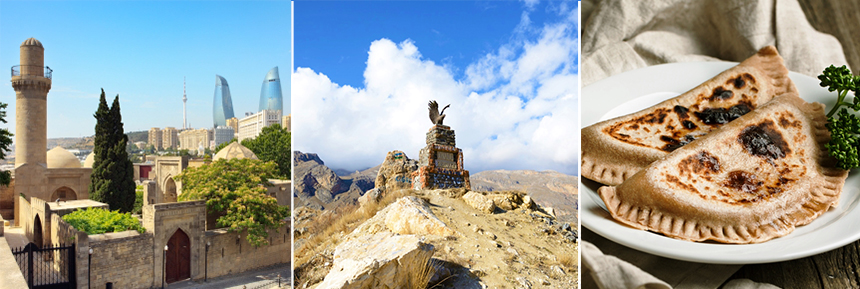
Tourism in Azerbaijan has been busy for centuries - just look at all the caravanserais that held travelers moving along the Silk Road. Azerbaijan today is a unique combination of the many cultures and empires that have passed through, as well as home to some of the most stunning natural landscapes of the Caucasus. Whether you want to explore the most modern corners of cities or escape into the mountains or beaches, Azerbaijan has something to offer.
Baku is Azerbaijan’s capital and largest city, built around the fortified Icheri-Sheher. Walk through the narrow alleys and discover the many sights around every corner, or enjoy the broad promenades and world-class establishments of the more modern parts of the city. You’ll find for yourself that Baku is a charming city on par with many other world metropolises. Explore the history of Azerbaijan at the Palace of the Shirvanshahs, and climb the Maiden Tower to see Baku in full. And for something beyond tourist sites, try some shopping through Baku’s pedestrian streets or a meal at one of the fine restaurants throughout the city, serving both traditional Azerbaijani food and international classics.
Head out of the city for even more of Azerbaijan. Be amazed by the detailed workmanship at the Palace of Shaki Khans, wander through the otherworldly mud volcanoes in the Gobustan Reserve, or climb the mountains to reach Khinalug, the highest village in Europe. Naftalan is home to petroleum spas, where there are unique oil baths, or spend some time relaxing on the beaches of the Caspian Sea or the slopes of the Caucasus Mountains. Shamakhi was an ancient capital of Azerbaijan, and today’s rebuilt buildings are great examples of modern Islamic architecture.
Azerbaijan’s rich culture is on display at any of the country’s many museums, from the large museums of the country’s capital to the smaller regional museums, full of character. Learn about local and regional history, carpet making, nature, and more, and then head out and experience it for yourself. See how the patterns of nature ended up in the carpets of Quba, or how the flavors of southern Azerbaijan influenced the top restaurants in Baku.
From 28 meters (92 ft) below sea level to 4,466 m (14,652 ft) above sea level, Azerbaijan’s nature has plenty to explore. In the north of the country are the Great Caucasus Mountains, home to the best ski resorts and extreme mountain landscapes. In the center of the country are rolling hills covered in forest and deserts, broad and open. And don’t forget the seashore. Even though the Caspian Sea is technically the largest lake in the world, there’s plenty of space for watersports and relaxing on the beach.
Azerbaijan is all about extremes: ancient and modern, natural and man-made, minimal and intricate. You’ll definitely want to experience Azerbaijan for yourself, with a tour that fits your needs and allows you to explore your interests in this beautiful country.
Historical Tourism
Azerbaijan is home to two UNESCO World Heritage Sites, plus a number of other important places that have been considered for inclusion in the World Heritage Sites list. Right in the center of Baku is Icheri-Sheher, the walled city that once housed the entire population of Baku. Wander through the narrow alleys of the city to experience how it would have looked to the medieval residents who walked the same streets. The other site is Gobustan, home to hundreds of thousands of petroglyphs depicting ancient life. Go beyond the obvious with trips to Sheki, Khinalug, Ateshgah, or to the many fortresses and temples that were staples of life in the region for centuries. Azerbaijan’s rich history can be explored at the many historical destinations across the country. Sheki and Shamakhi were capitals of empires that existed centuries ago, and their former imperial glory lives on in the historical sites and their surroundings.
Cultural Heritage Tourism
Baku is famous for its cultural life, but that’s not to say that the rest of the country doesn’t have its own charms. A visit to the Azerbaijan Carpet Museum and excursions to carpet workshops (Quba has a thriving workshop) will make anyone an expert of carpets and the various regional types found around Azerbaijan. Art lovers will appreciate the Museum of Modern Art or the National Museum of Art, and theater lovers will find plenty to do in Baku. Some famous historical sites also have a cultural aspect, such as the isolated and unique culture of Khinalug and the excellent craftsmanship of Sheki. UNESCO has recognized copper making in Lahic, silk scarves, carpet weaving, mugham and tar as Intangible Cultural Heritage, but this is only a start when it comes to exploring Azerbaijan’s cultural heritage.
Food Tourism
Azerbaijan’s cuisine is a mix of a variety of sources from east and west. Be sure not to miss juicy, smoky kebabs or richly filled kutabs, stuffed with meat and greens and folded into a half circle. Some dishes can be found in other countries, like dolma (grape leaves stuffed with meat and rice) and baklava (layers of dough filled with honey), but even then, Azerbaijan adds its own spin and style to these more common dishes. People in Azerbaijan also love their teas and soups. Try a cold soup with yogurt (dovga) or a traditional hot lentil soup, followed by tea served with sweets and jams. Baku is filled with world-class restaurants, but head out of the capital to discover each region’s speciality dish and more traditional recipes.
Adventure and Nature Tourism
From the shores of the Caspian Sea (which actually lie below sea level) to the heights of the Caucasus Mountains, Azerbaijan offers a variety of natural destinations. Summer is a great time to relax by the beach, with a variety of seashore resorts on the Caspian Sea, while winter is the perfect season for a stay at a ski resort in the mountains. There are also national parks that are great for hikes and even longer trips, while picnicking has long been a treasured tradition. Take care of your health, rest and relax, or try something new and exciting by heading out into Azerbaijan’s nature.
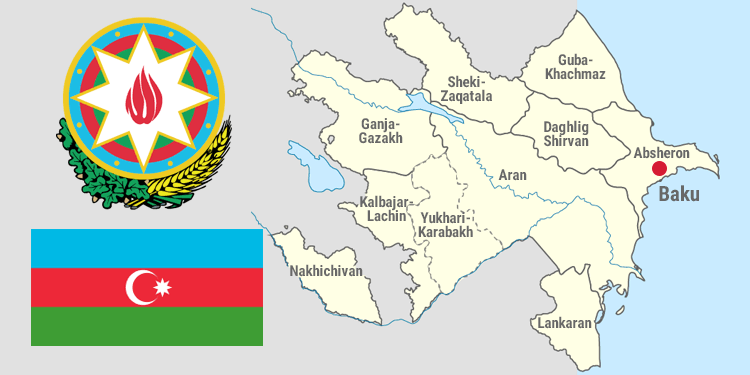
Full name of the country: Republic of Azerbaijan
Area: 86,600 sq km.
Population: about 9.6 million
Capital: Baku
People: 90% - Azerbaijanis, 2% - Lezgians, 1.3% - Russians, 5.1% - other nations
Language: Azeri
Religion: Moslems, mostly Shiites.
State system: republic
Branches of national economy: natural gas and petrochemical, metallurgical, cotton cleaning.
Major cities: Ganja, Sumgait , Mingechevir, Lankaran, Agdam, Nakhchivan, Khachmaz, Quba, Shamakhi
Natural resources: oil, gas, copper, polymetals, alunites, gold
Main agricultural crops: cotton, fruits, silk
National currency - Azerbaijani manat. More...
Area: 86,600 sq km.
Population: about 9.6 million
Capital: Baku
People: 90% - Azerbaijanis, 2% - Lezgians, 1.3% - Russians, 5.1% - other nations
Language: Azeri
Religion: Moslems, mostly Shiites.
State system: republic
Branches of national economy: natural gas and petrochemical, metallurgical, cotton cleaning.
Major cities: Ganja, Sumgait , Mingechevir, Lankaran, Agdam, Nakhchivan, Khachmaz, Quba, Shamakhi
Natural resources: oil, gas, copper, polymetals, alunites, gold
Main agricultural crops: cotton, fruits, silk
National currency - Azerbaijani manat. More...
History of Azerbaijan
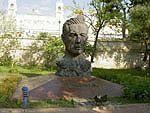 The history of Azerbaijan as a state is approximately 5 thousand years old. The first state bodies on the territory of Azerbaijan appeared in late 4,000 - early 3,000 BC. In 1,000 BC there existed Manna, Iskim, Skit, Scyth and such strong states as the Caucasian Albania and Atropatena. These states played a big role in strengthening the culture of government, in the history of economic culture of the country as well as in the uniform nation formation.
The history of Azerbaijan as a state is approximately 5 thousand years old. The first state bodies on the territory of Azerbaijan appeared in late 4,000 - early 3,000 BC. In 1,000 BC there existed Manna, Iskim, Skit, Scyth and such strong states as the Caucasian Albania and Atropatena. These states played a big role in strengthening the culture of government, in the history of economic culture of the country as well as in the uniform nation formation.
In the 3rd century AD Azerbaijan was occupied by the empire of Iranian Sasanids and in the 7th century by Arabian Khalifat. The invaders populated the country with numerous Iranians and Arabs. With the introduction of Islamic religion in the 7th century there occurred the important breakthrough in the history of Azerbaijan . Islam greatly facilitated the formation of uniform nation, language, customs and etc. among Turkic and not Turkic peoples on the territory of Azerbaijan .
Azerbaijan witnessed new political development: on Azerbaijan lands united by Islam the states of Sadzhids, Shirvanshahs, Salarids, Ravvadidso and Sheddadids were established. It was the beginning of the Renaissance of Azerbaijan history. Late 15th - early 16th might be considered as the new milestone in the history of Azerbaijan . An outstanding statesman Shakh Ismail Hatai managed to unite all northern and southern Azerbaijani lands under hi rule. As result Sefevid state with capital in the city of Tabriz was created which later turned into one of the most powerful empires in the Middle East.
Nadir-shakh, an outstanding Azerbaijani commander who came to power after the fall of Sefevid state even more expanded the boundaries of the former empire. This Azerbaijani ruler in 1739 conquered Northern India, including Delhi. However, after the death of Nadir-shakh the empire collapsed. Thus, in the second half of the 18th century Azerbaijan broke up into smaller states - khanates and sultanates. In the end of the 18th century Iran was under the rule of Gadzhars, an Azerbaijani dynasty. They began to pursue the policy of placing all territories of the former Nadir-shakh empire and Azerbaijan khanates under centralized rule.
That was how the epoch of long wars between Gadzhars and Russia, which strived to conquer the southern Caucasus, began. As a result, on the basis of Gjuljustan (1813) and Turkmenchaj (1828) traeties Azerbaijan was divided between the two empires: Northern Azerbaijan was attached to Russia, and its southern part - to Iran.
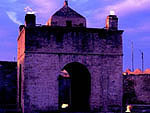 This period marks the start of the genocide of Azerbaijanians from the part of Armenian neighbors. The fight for freedom in Northern Azerbaijan was very intense. Due to the assistance from Turkey the liberation movement won, and in 1918 the first democratic republic in the Orient right in Northern Azerbaijan - the Azerbaijan Democratic Republic (ADR) was founded .
This period marks the start of the genocide of Azerbaijanians from the part of Armenian neighbors. The fight for freedom in Northern Azerbaijan was very intense. Due to the assistance from Turkey the liberation movement won, and in 1918 the first democratic republic in the Orient right in Northern Azerbaijan - the Azerbaijan Democratic Republic (ADR) was founded .
Its existence was brief, though. On April 28, 1920 it was announced about the creation of the Azerbaijan Soviet Socialist Republic (Azerbaijan SSR) on the territory of the ADR. In December 1922 Azerbaijan , Georgia and Armenia formed the Transcaucasian Socialist Federal Soviet Republic . In 1922 it became a part of the USSR , and in 1936 the TSFSR was dismissed, and Azerbaijan SSR joined the USSR as an independent republic which existed until 1991.
However, the modern history of Azerbaijan contains one more significant page - Armenia - Azerbaijan conflict over annexation of the Nagorno-Karabakh Autonomous Republic . Having declared itself (on October 8th, 1991 ) an independent democratic state, Azerbaijan after the fierce military combat actions lost its 6 areas, including Nagorno-Karabah Autonomous Region. In 1994 the countries signed the cease-fire treaty.
On August 30th, 1991 Azerbaijan became an independent state.
Azerbaijan Sights
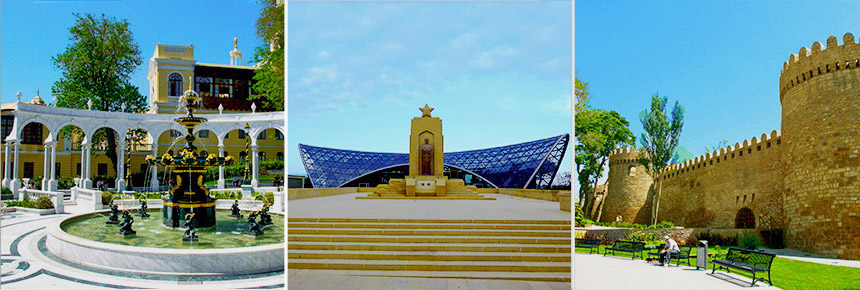
Every city, every corner in Azerbaijan has something special to offer. The centre of ancient Quba Khanate – city of Quba, is famous for its medieval fortresses and mosques. One of the oldest cities is Sheki that is well known for magnificent palaces some of which are today transformed into luxurious hotels.
Azerbaijan will amaze you with its natural conditions: there are seashore and rivers, mountains ranges and plains, semi-deserts and forests on the territory of the country. You will see the most beautiful sceneries, waterfalls and rivers, springs with crystal clear water, deep gorges, green lawns, thermal and mineral springs, and pure mountain air. Special attention should be paid to Tengi canyon, Afurjin waterfall and the Gobustan reserve included in the UNESCO World Heritage List. Tourists rest in the resort areas of the Caspian Sea, enjoy diving, do waterskiing, biking and boating. Those who wish to improve and strengthen health may choose one of numerous sanatoriums of Azerbaijan. Through its unique microclimate, Lenkoran and Talysh are considered one of the best balneological resorts.
Azerbaijan sights will satisfy the most demanding traveler. You will see rock inscriptions and mud volcanoes of Gobustan reserve, The Maiden Tower and Primorskiy Boulevard in Baku, visit the shores of Absheron and the temple of fire-worshippers Ateshgah, be delighted of the richness of Sheki Khan Palace and the rigidity of Khinaliq settlement. As the memory of the trip to this unique country, you will have famous Quba carpets, inimitable Azerbaijan wine, high quality silk, gold jewelry and many other souvenirs.
Population and language of Azerbaijan
Population and language
The population of Azerbaijan exceeded 9.574 million as of November 1, 2014.
According to estimates 91,6% of the population of the Republic are Azerbaijanis, 8,4% are representative of other nationalities. Among them are Russians – 1,3%, Lezgins – 2,0%, Talysh – 1,3%. The rest of the population is made up of Avars, Turks, Tatars, Ukrainians, Tsakhurs, Georgians (Ingiloys), Kurds, Tats and representatives of other nationalities.
Urban residents comprised 53,1% of the whole population as of 1 July 2013, with the rural population of 46,9%. Expected lifespan (2008) in Azerbaijan is 72,6 years, for men – 69,9 years and women – 75,4 years.
According to estimates 91,6% of the population of the Republic are Azerbaijanis, 8,4% are representative of other nationalities. Among them are Russians – 1,3%, Lezgins – 2,0%, Talysh – 1,3%. The rest of the population is made up of Avars, Turks, Tatars, Ukrainians, Tsakhurs, Georgians (Ingiloys), Kurds, Tats and representatives of other nationalities.
Urban residents comprised 53,1% of the whole population as of 1 July 2013, with the rural population of 46,9%. Expected lifespan (2008) in Azerbaijan is 72,6 years, for men – 69,9 years and women – 75,4 years.
Azerbaijani language
The state language of Azerbaijan belongs to the Oguz sub-group (together with Gagauz, south coast dialect of Crimean-Tatar, Turkish and Turkmen languages) of the south-west branch of Turkic languages, but has features typical of languages of Kipchak area.
Modern Azerbaijani language has different dialects:
- Eastern group (Baku, Quba, Shamakhi dialects, also Lankaran and Mugan dialects);
- Western group (Ganja, Gazakh, Karabakh and Ayrum dialects);
- Northern group (Sheki and Zaqatala-Qakh dialects);
- Southern group (Nakhchivan, Ordubad dialects).
- Western group (Ganja, Gazakh, Karabakh and Ayrum dialects);
- Northern group (Sheki and Zaqatala-Qakh dialects);
- Southern group (Nakhchivan, Ordubad dialects).
There are its own dialects in Azerbaijani language that are widespread in Iran, Iraq, Russia (Dagestan), Georgia and Turkey. According to various estimations, the general number of ethnic Azerbaijanis make up 35 to 50 mln people around the world.
The Day of Azerbaijani alphabet and language is annually celebrated on 1 August.
Azerbaijan Nature
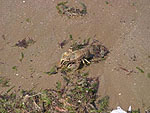 Azerbaijan’s varied landscapes are home to an impressive variety of flora, fauna, and even just beautiful spots to discover. Azerbaijan’s nature is defined by the waters of the Caspian Sea, the peaks of the Caucasus Mountains, with the rich valleys and forests that lie in between. Despite some severe destruction during Soviet times, nature in Azerbaijan is now under the protection of the government, and nature reserves keep the most amazing sights safe for generations to come. The higher elevations are dominated by mountain peaks and thick forests, while the lower elevations are grasslands and desert.
Azerbaijan’s varied landscapes are home to an impressive variety of flora, fauna, and even just beautiful spots to discover. Azerbaijan’s nature is defined by the waters of the Caspian Sea, the peaks of the Caucasus Mountains, with the rich valleys and forests that lie in between. Despite some severe destruction during Soviet times, nature in Azerbaijan is now under the protection of the government, and nature reserves keep the most amazing sights safe for generations to come. The higher elevations are dominated by mountain peaks and thick forests, while the lower elevations are grasslands and desert.
The Caspian Sea is the world’s largest lake, home to numerous species of plants and animals. Sturgeons and sturgeon caviar from the Caspian Sea are popular in restaurants, as are other types of fish. Seagulls, turtles, and seals can also be found in the Caspian Sea, and in ancient times, dolphins used to live in the sea. The wetlands and rich shores around the Caspian Sea are beneficial for Azerbaijan’s nature, and the beaches and protected areas are perfect for visitors.
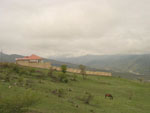 The Caucasus Mountains are known for their forbidding profile and spectacular landscapes. The lower slopes have thick forests, but at higher altitudes, the landscape is dominated by sparse plains and rocky peaks. Wolves, bears, deer, wild goats and large cats can be found in the more isolated areas, and though cheetahs, tigers and lions used to roam the slopes, they went extinct long ago. In the winter, heavy snowfall makes for great skiing, and there are several ski resorts in the high mountains. In the summer, people use the more calm parts of Azerbaijan’s nature and mountains for picnicking and hiking.
The Caucasus Mountains are known for their forbidding profile and spectacular landscapes. The lower slopes have thick forests, but at higher altitudes, the landscape is dominated by sparse plains and rocky peaks. Wolves, bears, deer, wild goats and large cats can be found in the more isolated areas, and though cheetahs, tigers and lions used to roam the slopes, they went extinct long ago. In the winter, heavy snowfall makes for great skiing, and there are several ski resorts in the high mountains. In the summer, people use the more calm parts of Azerbaijan’s nature and mountains for picnicking and hiking.
Central Azerbaijan is part of the drainage basin of the Kura River. This river starts in Turkey, then crosses Georgia before flowing through the broad valley between the Greater and Lesser Caucasus Mountains in Azerbaijan. At higher elevations there are meadows in this valley, whereas lower elevations can be semi-deserts. Though there used to be forests along the riverbanks, today there are mostly farms. There are also some important wetlands as the Kura reaches the Caspian Sea, home to birds and other wildlife.
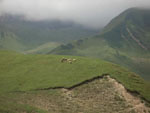 The most important and fragile natural places in Azerbaijan have become state parks and national parks. Plane tree forests, mud volcanoes, glaciers, deserts, and lakes are all under the protection of the park system, including some of the most unique and interesting natural formations in Azerbaijan. In recent years, more areas have become state or national parks, and even existing parks have been expanded to protect more territory. Gobustan State Reserve and Absheron National Park aren’t far from Baku, whereas other parks are in deeper and more isolated parts, protecting more untouched areas.
The most important and fragile natural places in Azerbaijan have become state parks and national parks. Plane tree forests, mud volcanoes, glaciers, deserts, and lakes are all under the protection of the park system, including some of the most unique and interesting natural formations in Azerbaijan. In recent years, more areas have become state or national parks, and even existing parks have been expanded to protect more territory. Gobustan State Reserve and Absheron National Park aren’t far from Baku, whereas other parks are in deeper and more isolated parts, protecting more untouched areas.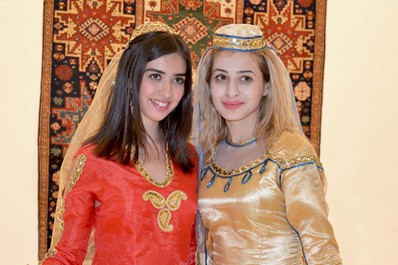
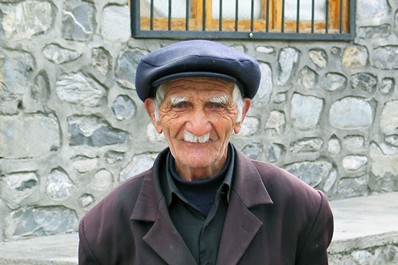
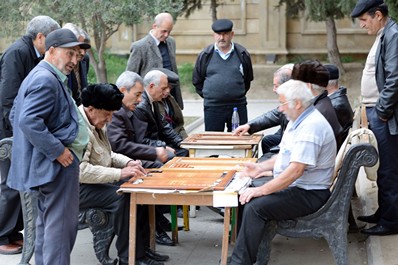



 Azerbaijani Manat to
Azerbaijani Manat to  American Dollar
American Dollar



0 Comments:
Post a Comment
Note: Only a member of this blog may post a comment.